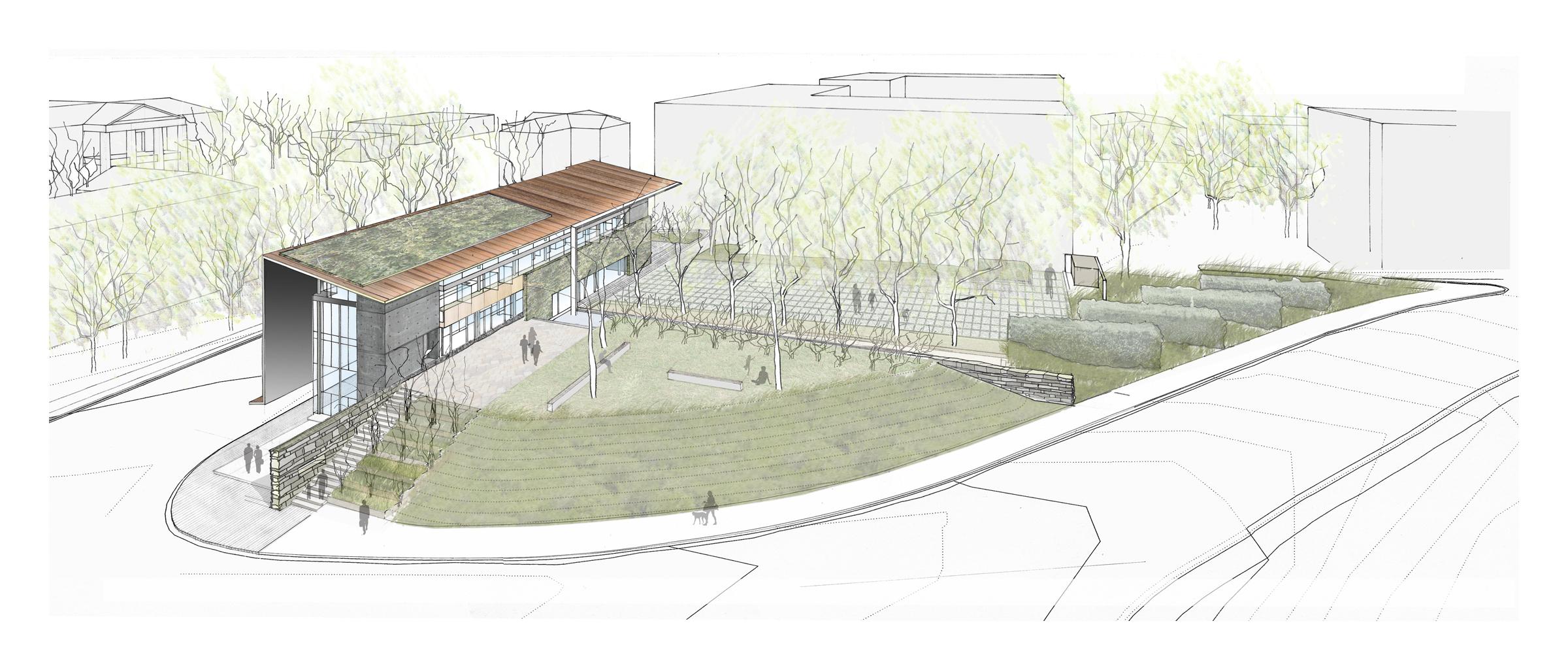On a site in downtown Raleigh that architect Frank Harmon likens to the shape of a pork chop, the North Carolina chapter of the AIA soon will break ground for a new Center for Architecture and Design.
“It’s on less than an acre, and we placed it parallel to Peace Street,” Harmon says. “It’s a long, thin building with a porch on the south side. You’ll find that all over the South – at Mount Vernon, for example – so we knew that was a good pattern to follow.”
Harmon’s firm won the commission out of 60 entries in a 2008 competition. “We had a compelling site plan,” he says. “It was a design suited to the needs of the AIA.”
Parking has been placed at grade level, with the potential to share space with open-air exhibits, a farmers’ market, sculptures and film showings. “You could even build a Habitat for Humanity house there, and ship it off to Haiti,” he says.
The 12,000 square-foot building will serve as home to the NCAIA staff of five, with potential to grow over time. A coffee shop and gallery will grace the Peace Street entrance, with the top floor’s 3,900 square feet reserved for tenants.
Harmon’s primary challenge – in a classic David vs. Goliath struggle – lay with clumsy quintet of neighbors sprawling southwest of the site, around the state’s legislative plaza. The Archdale building in particular swaggers monolithically above the city. But in a deftand gracious gesture, Harmon ignored them all.
“Ours is a horizontal statement,” he says. “The real face of the building is to the south, looking toward the state capitol.” The new building will commence twelve feet above grade, assuring a clear view down Wilmington Street to the 1840 neoclassical dome of the Ithiel Town, Alexander Jackson Davis, and David Paton building.
North Carolina fields one of the strongest AIA chapters in the nation, and enjoys a legacy of excellent design because of the influence of NC State’s College of Design, as well as UNCC and North Carolina A & T. The AIA Center should provide an architectural example for the entire state. Importantly, it’s only a stone’s throw away from those who make decisions about the state’s built environment.
“It’s a one-stop shop for legislators,” Harmon says. “The building itself is a role model for design that’s inspiring, and that belongs to the community.”
For more, go here.


